The green cycle at Vinamilk Green Farm's 500-hectare site
Vinamilk transforms cow manure into organic fertilizer, uses green energy, and establishes land and water cycles to build a sustainable dairy farm system.
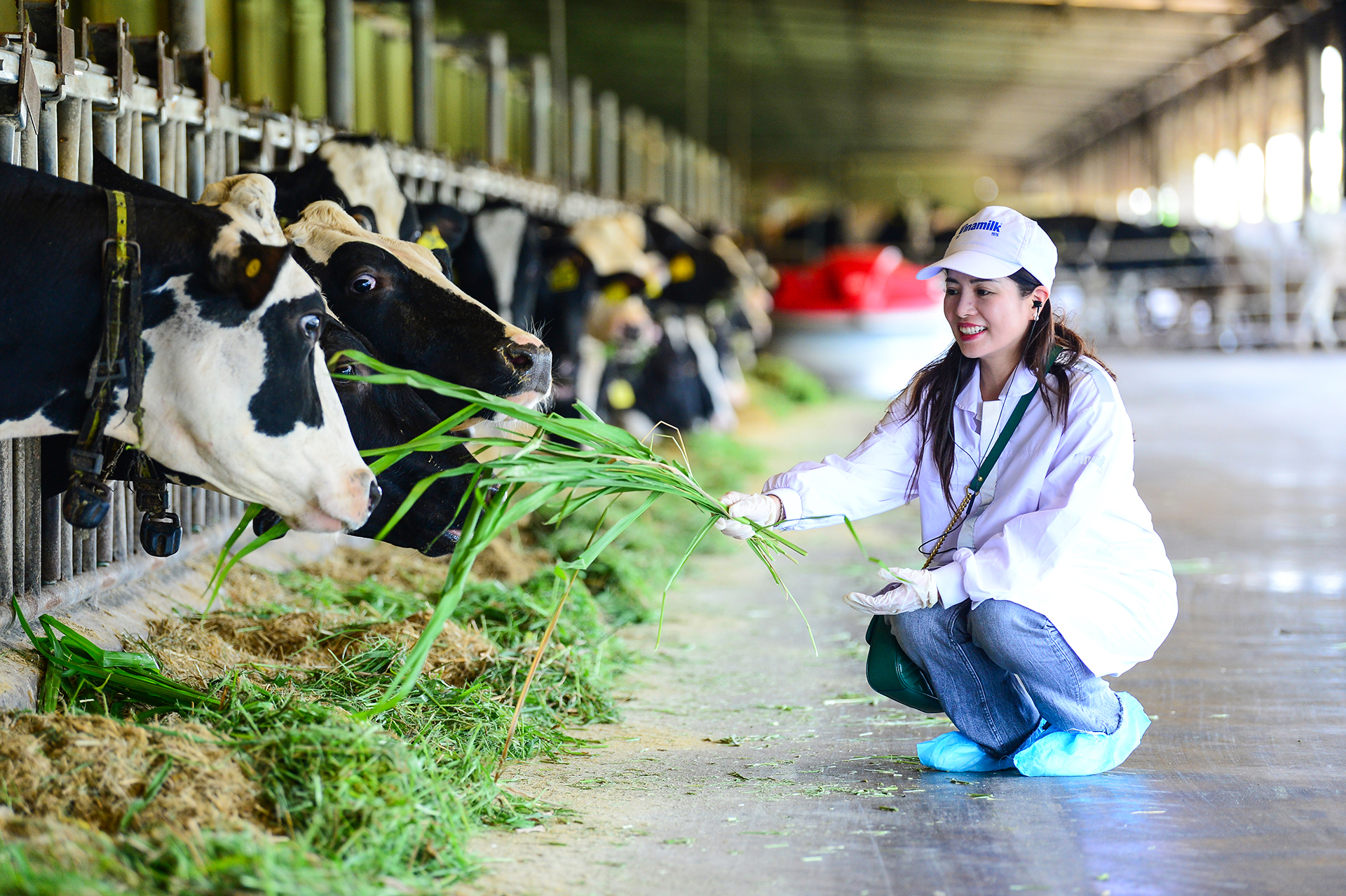 |
An aerial view of Vinamilk Green Farm Tay Ninh. |
Gesturing towards the expansive Mombasa grass field, Nguyen Van Minh, head of Crop Production at Vinamilk Green Farm Tay Ninh, explained that the unit dedicated three years to letting the land rest and purify itself of residual substances, returning it to its most natural state. During that time, agricultural experts from Vinamilk and Japan meticulously studied the soil to gain a thorough understanding of its properties.
This was the first step in transforming the previously barren land into 500 hectares of fertile ground, meeting European Organic standards, one of the most stringent agricultural certifications currently available.
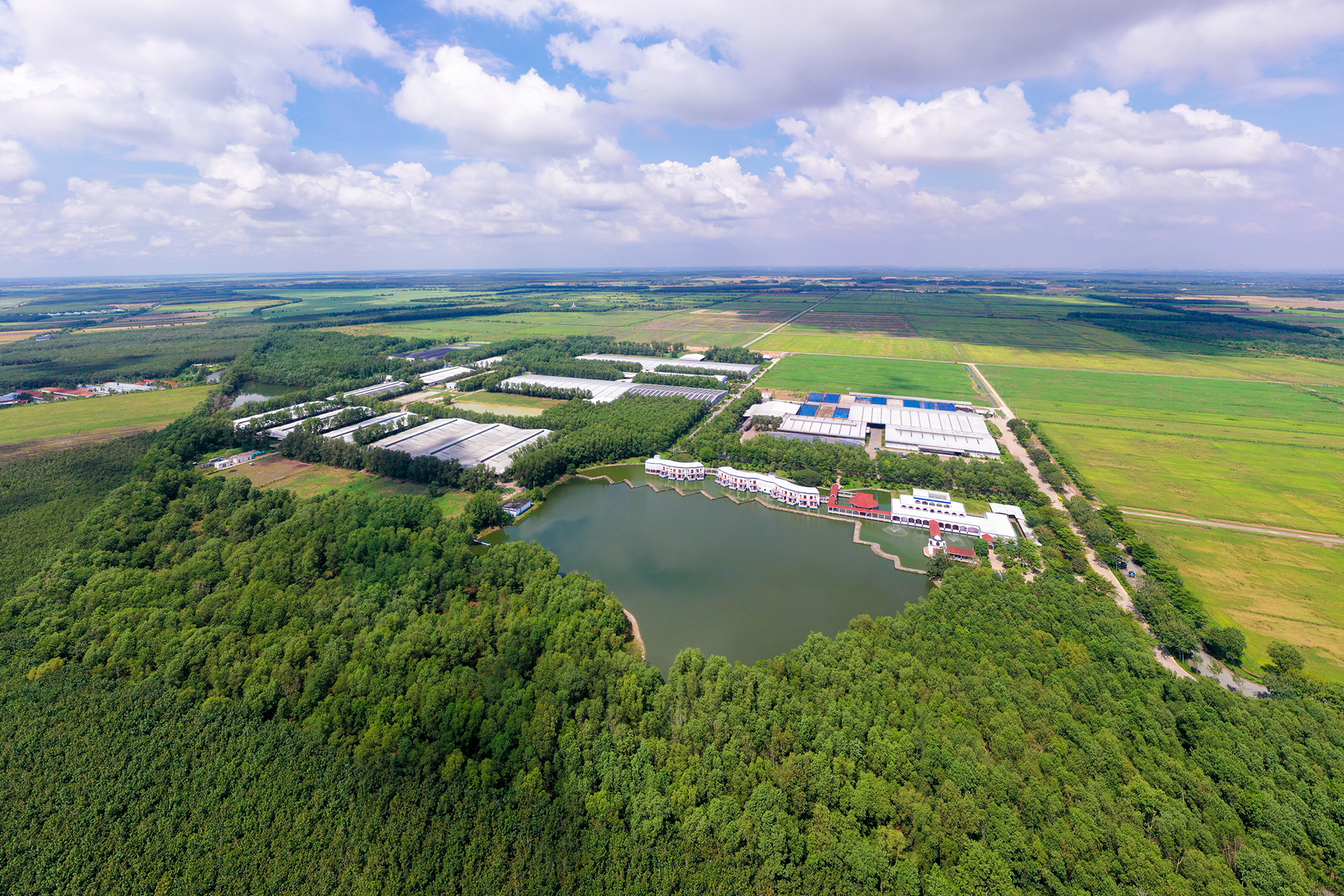 |
The VBCSD-VCCI delegation visited Vinamilk Green Farm Tay Ninh last July. |
To learn more about this journey, over 30 experts and personnel working in sustainable development at leading Vietnamese businesses and organizations recently visited Green Farm Tay Ninh. During the trip, electric vehicles transported the visitors to various areas of the farm, including livestock rearing, crop cultivation, and waste treatment facilities. They witnessed firsthand how Vinamilk "unlocked" nature, transforming a once arid and desolate area into a sustainable "dairy resort."
The activity was part of the Sustainability Connect Trip & Talk program organized by the Vietnam Business Council for Sustainable Development (VBCSD) under the Vietnam Chamber of Commerce and Industry (VCCI), with the theme "Unlocking Nature, Developing Sustainably."
A "nothing goes to waste" ecological cycle
Livestock waste, a persistent issue in all livestock models, is now a resource for soil improvement. Leading the visitors to a vehicle carrying treated organic fertilizer, Minh picked up a handful of cow manure that had been composted for at least 15 days and invited everyone to examine it. The compost was completely dry and odorless. A soil cycle has gradually been established. Soon, the company will also utilize software to assess soil health.
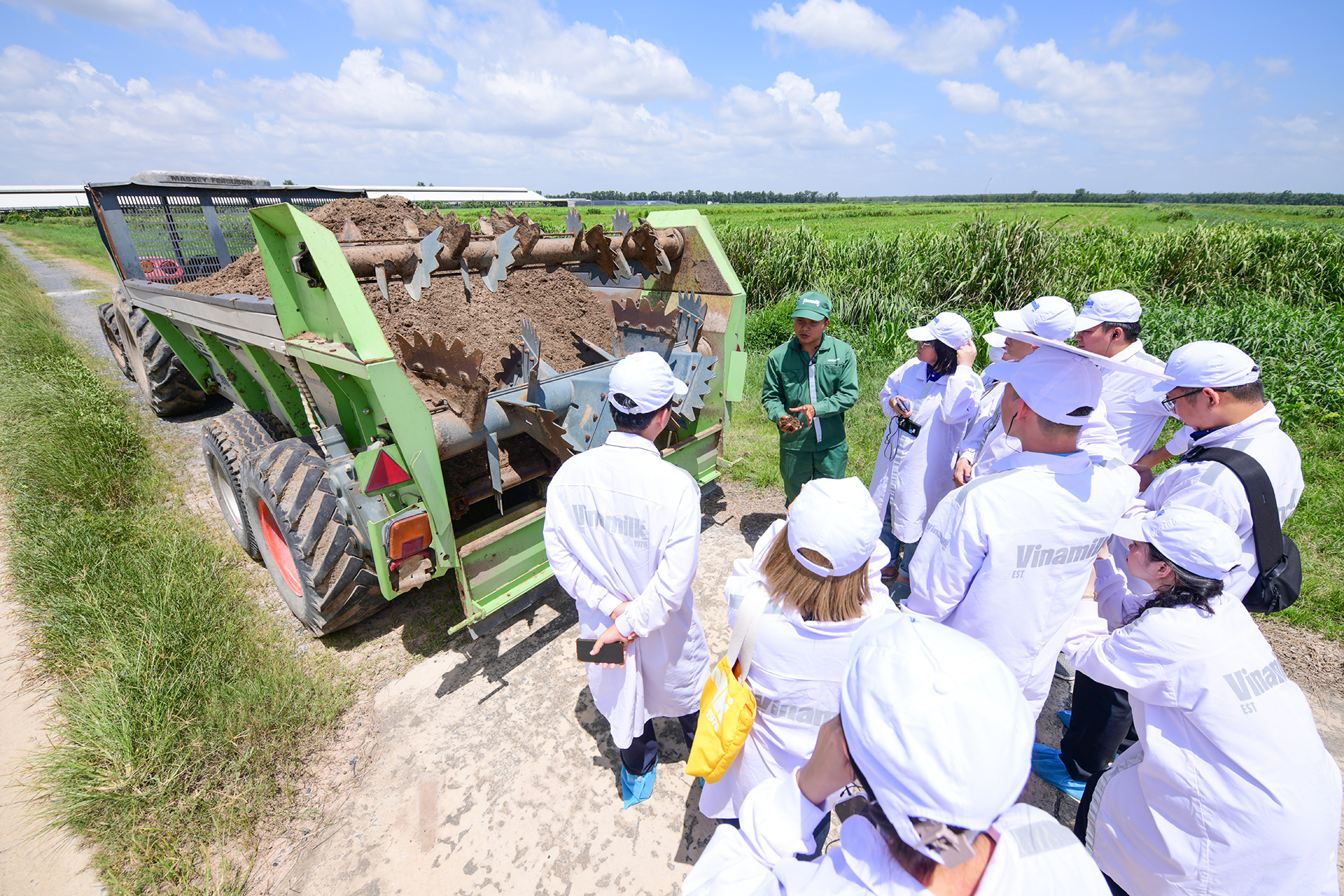 |
The delegation visits the dairy cows' "housing" area. |
The delegation examines the treated organic fertilizer.
According to Nguyen Quynh Nga, deputy director of VCCI's Sustainable Business Office, the practices at Vinamilk Green Farm Tay Ninh are a concrete example of the "unlocking nature" approach, creating a closed green cycle and extending benefits to the community.
"Vinamilk has demonstrated that nature is the key to addressing challenges related to food security and international competitiveness for Vietnamese agriculture," Nga emphasized.
 |
Nguyen Quynh Nga speaks at the event.
The farm's waste management process ensures that almost nothing is wasted. In addition to transforming 30-45 tons of cow manure daily into nutrient-rich organic fertilizer, the methane gas generated during the composting process is also collected into a biogas system. This renewable energy source is used for heating water, pasteurizing milk for calves, drying employee clothing, and drying grass, saving the farm over 100 million VND in electricity costs monthly.
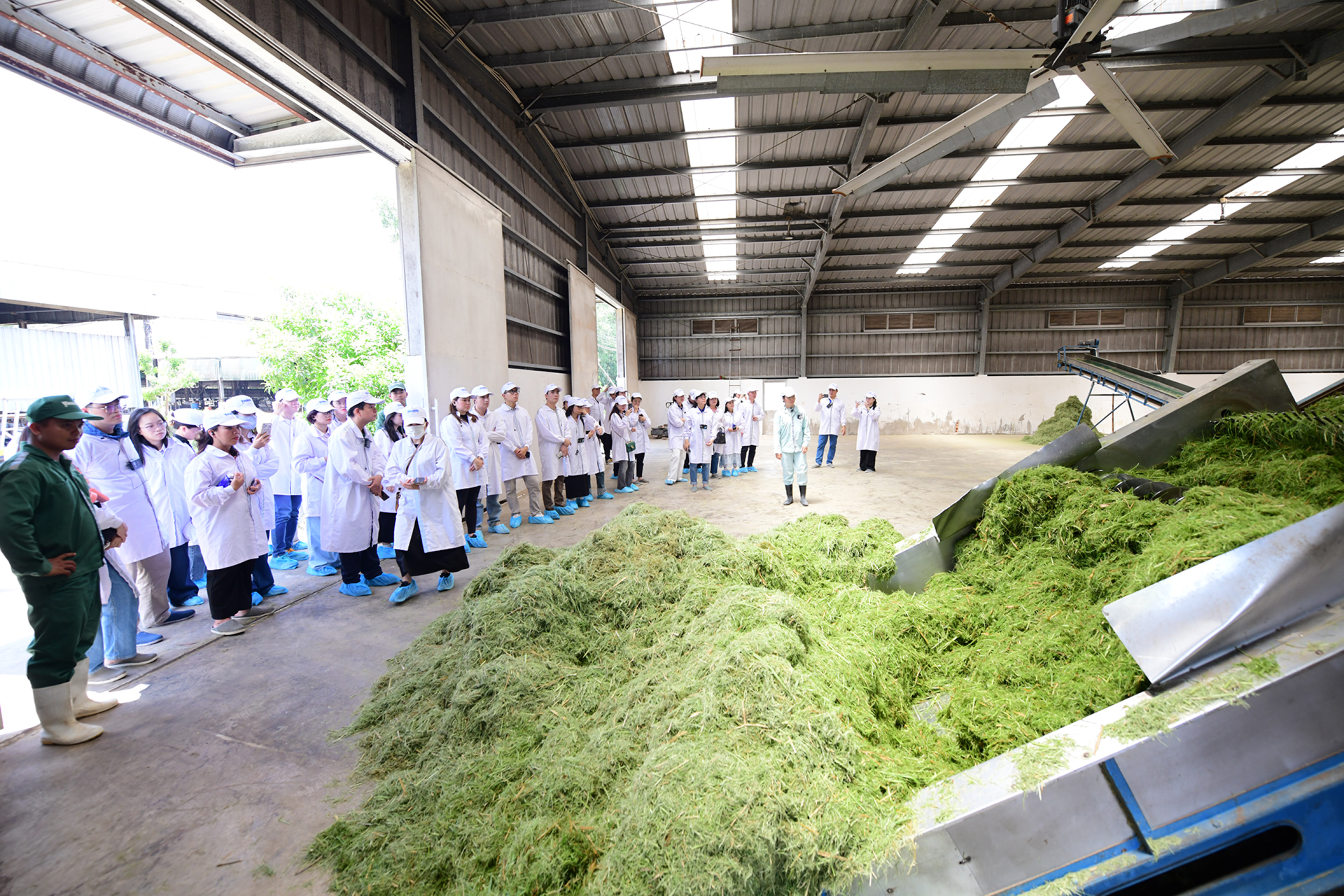 |
The delegation visits the grass drying area.
Notably, the grass drying system was invented by farm employees. Operating on the same principle as tea drying, fresh Mombasa grass can be dried to various degrees according to the cows' needs and achieves a quality comparable to imported grass. "Thanks to this, the farm can produce dried grass on-site for about 2,000 VND/kg, ten times cheaper than previously imported grass," said Kieu Linh, director of Animal Husbandry and Veterinary Medicine at Green Farm Tay Ninh.
Freshly cut grass is dried and fed to the cows and calves on the same day, ensuring freshness and nutritional value. "Although it's farm-dried grass, it still undergoes checks from input to finished product evaluation before being sent to the 'kitchen' for feed processing in a closed system, ensuring the herd's health," Linh added.
Fresh grass is cut daily and dried for the cows.
The destination for the processed grass and corn is the cows' and calves' housing areas. Upon entering the barns, visitors often remark that it's the "coolest place" on the farm, maintaining a temperature of 27-28°C and remaining odor-free despite housing nearly a thousand cows.
This is achieved through a cooling system with dozens of large fans and a well-ventilated barn design. An automatic misting system generates "artificial rain" every three minutes, helping to lower the temperature and reduce stress for the cows. Solar panels on the barn roofs both reduce heat and generate clean electricity.
Instead of maximizing land use to increase herd size, Vinamilk designed 9 lakes interspersed with greenery, transforming the farm into a dairy "resort." These lakes store and circulate water, acting as "air conditioners and humidifiers," creating a cool and comfortable environment for the dairy cows, which are adapted to temperate climates.
The farm identifies each cow through electronic chips to monitor their health and activity, tailoring care regimens accordingly. Feed is also managed through software, adjusting portions based on age and condition, and mixing over 20 types of nutritious grains and grasses. Robots serve food and play relaxing music, while automatic massage machines "scratch" the cows when they approach.
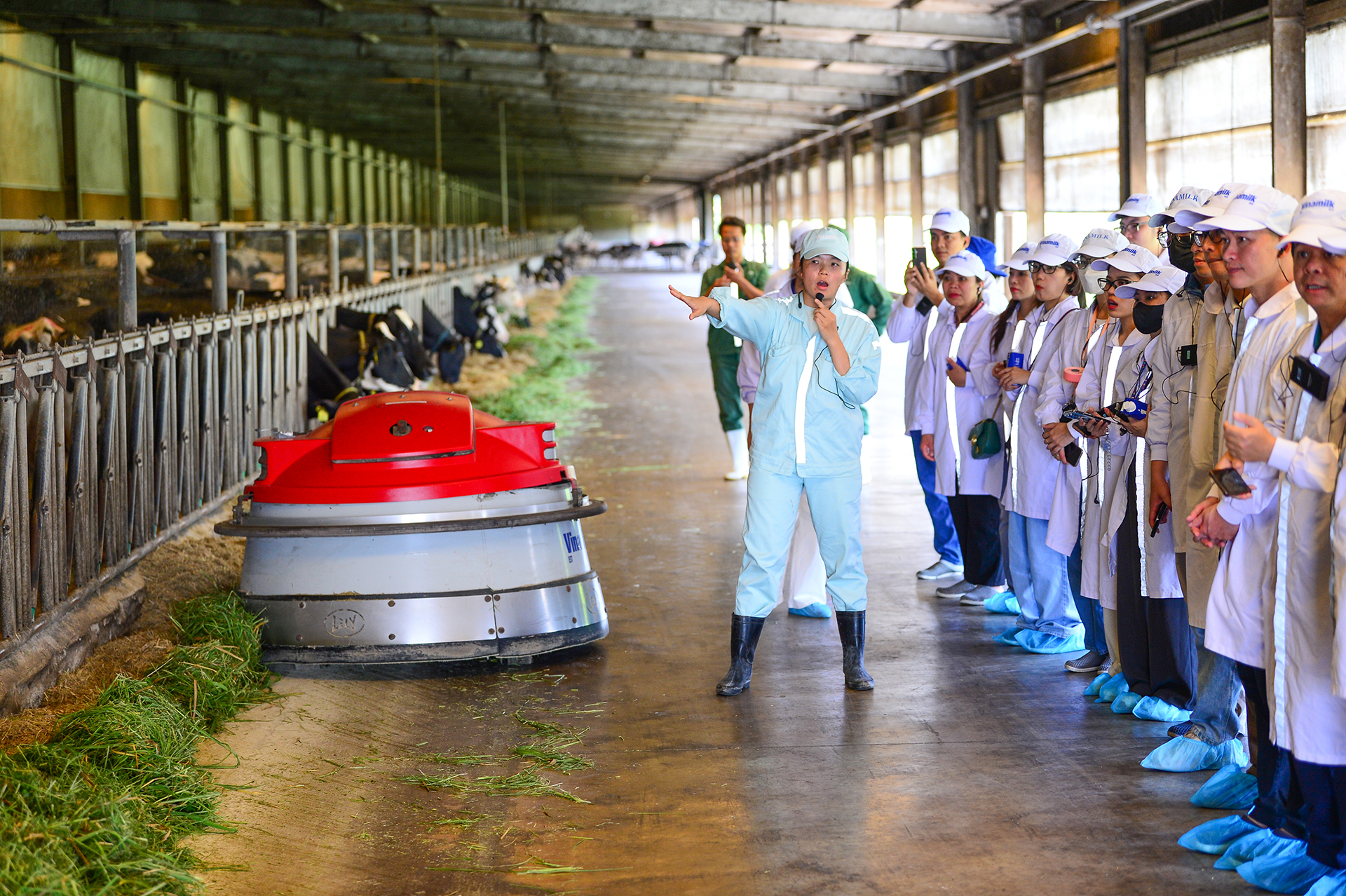 |
Despite utilizing numerous technological devices, the company prioritizes a "natural living environment, minimizing human intervention, and allowing the cows to comfortably eat, sleep, and move as they please, following their natural instincts," Linh emphasized.
From "unlocking" nature to the Net Zero target
Along with establishing land and water cycles and managing waste within the farm, Vinamilk extends its reach to the local community, creating a satellite agricultural zone around the sustainably developed farms.
The treated organic fertilizer from the farm will also be supplied to external farmers, supporting them in adopting good agricultural practices and ensuring quality. In 2024, the company purchased over 365,000 tons of biomass corn from local farmers, increasing their income. "Local residents become a link in the sustainable value chain, benefiting from and participating deeply with the company," a Vinamilk representative shared.
Lush cornfields and pastures thrive thanks to organic fertilizer processed from the farm.
Regarding greenhouse gas emission reduction, Nguyen Huynh Thanh Phong, Sustainable Development Director of Bureau Veritas Vietnam, commended Vinamilk's focus on genuine reduction at the source, rather than offsetting through external carbon credit purchases, implementing a concrete roadmap to achieve Net Zero by 2050.
Phong cited the farm's grass drying initiative, which not only enhances the company's self-sufficiency but also controls and reduces significant greenhouse gas emissions from production and transportation that would result from importing. Collaborating with farmers allows Vinamilk to better manage greenhouse gas emissions within its supply chain.
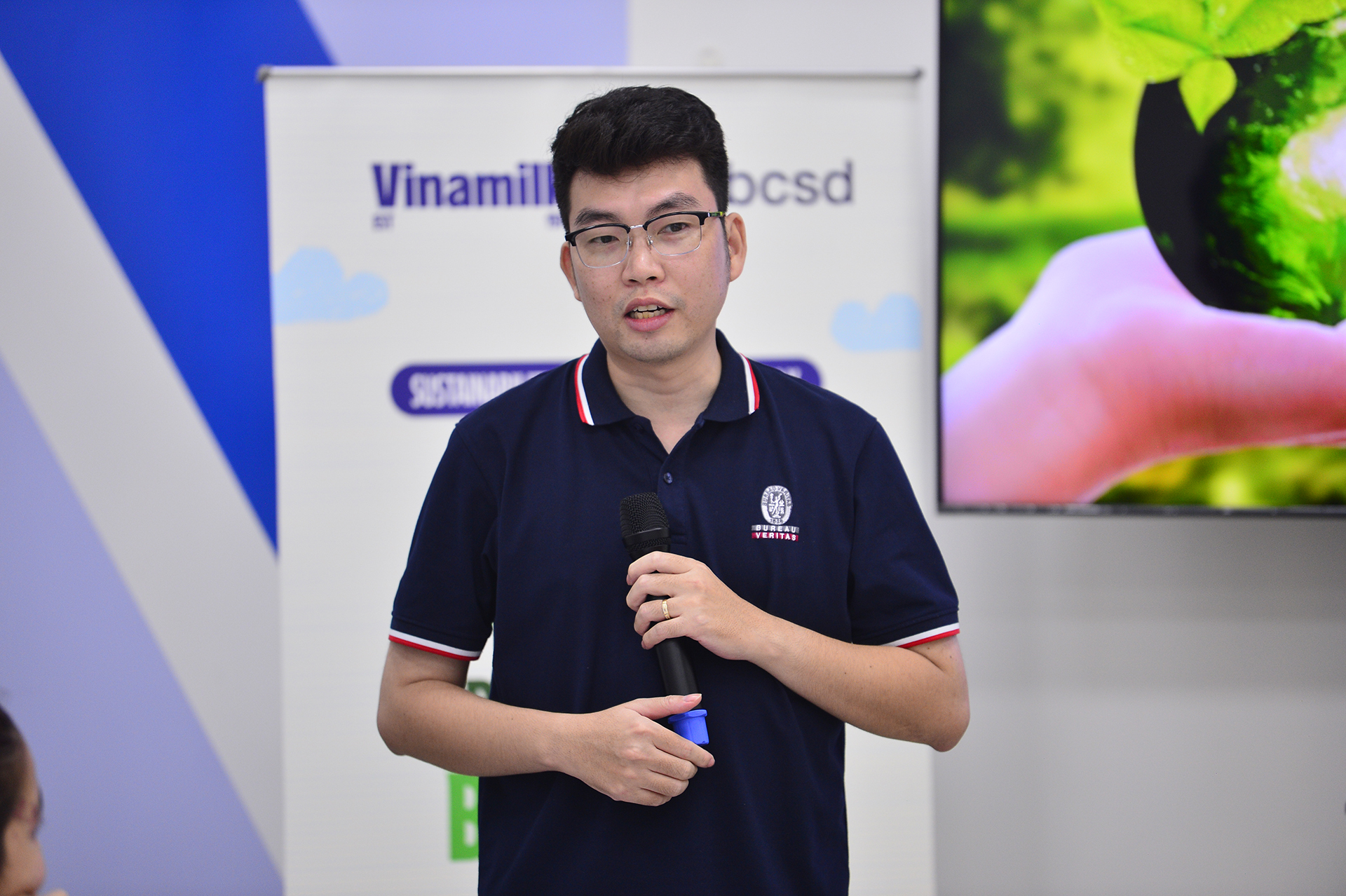 |
Nguyen Huynh Thanh Phong speaks at the event.
Visitors on the tour believe that learning from Vinamilk's roadmap and approach to "unlocking nature" empowers businesses to proactively implement international standards and ESG practices. This is especially significant as "sustainable development" becomes a strategic keyword for many businesses, where economic value goes hand in hand with sustainability.
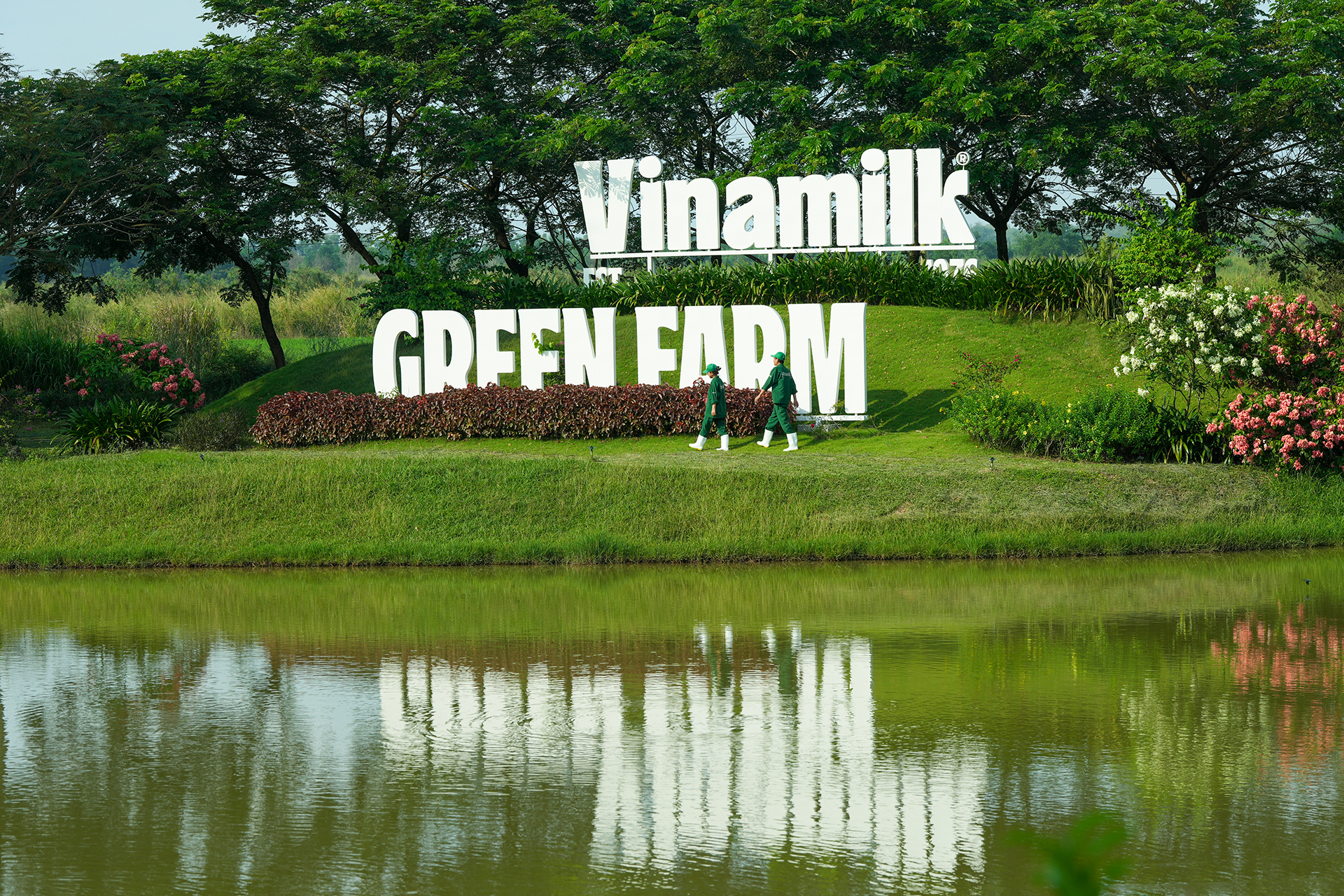 |
After nearly 20 years of investment and development, Vinamilk currently manages 14 farms in Vietnam and one in Laos, including four Green Farms. These farms are managed and operated according to international standards and sustainable development practices. Vinamilk currently invites consumers to visit the farms and learn about the dairy farming and milk production processes that meet international standards. This activity engages the community, especially as consumers become increasingly interested in the origin of ingredients and product quality. |
Content: Hoang Anh | Photos: Quang Dinh, Vina












